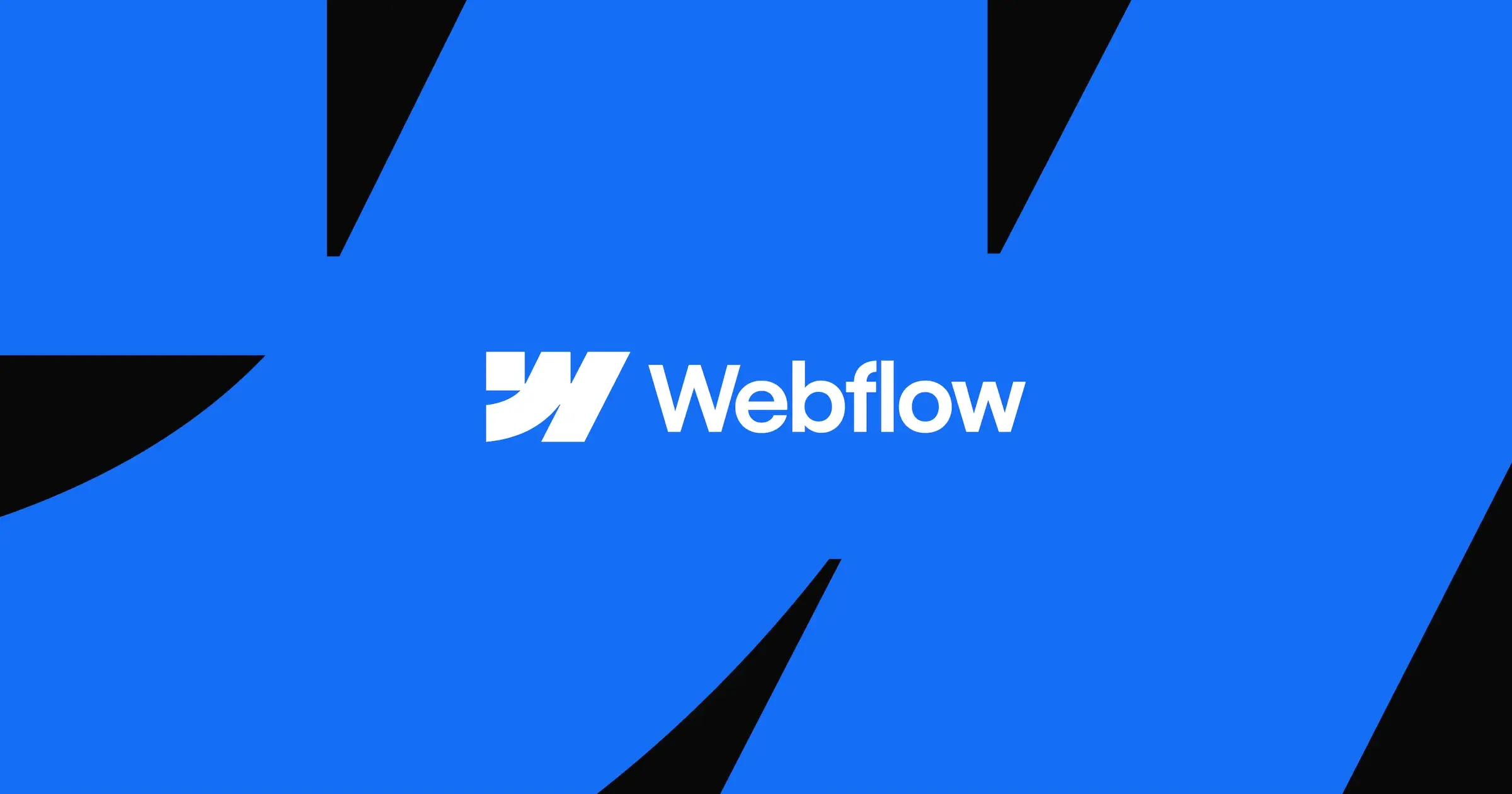Is Webflow a Good Fit for Small Businesses?

Oleksandra Sokolenko
Web designer

Web Design

May 17, 2024


.webp)
.webp)
.webp)
%20(1).webp)
Webflow has taken the website-building world by storm. But is it the perfect fit for a small business? Spoiler alert: We think it is! But before you jump in, let's explore the pros and cons to help you decide if Webflow is the right fit for your company.
Webflow empowers small businesses to build professional-looking websites with design freedom and control, all without the need for coding expertise. Here's why we think it is so good:
Traditionally, developing a website required either significant technical expertise or hiring a web developer, making it a time-consuming and often very expensive endeavor for many small businesses.
Webflow offers a refreshing alternative with its drag-and-drop functionality. It provides a user-friendly interface where you can visually arrange pre-built elements, like buttons, images, and text boxes, to create your website. It's like building with Lego blocks – no coding knowledge required, just the ability to click, drag, and drop. If you do have a need for complex functionality that requires coding, you have that option too. Webflow allows you to embed third-party or your own custom code anywhere in your design, giving you an opportunity to be flexible in your approach.

No-code essence of Webflow translates into tangible benefits for small businesses. Firstly, it saves you valuable time. Instead of tackling complex coding tutorials, you can focus on the content and design that will resonate with your target audience. Secondly, Webflow empowers you to potentially bypass hiring expensive web developers. Even if you do decide to enlist the help of a Webflow developer, their services are often more affordable compared to traditional web developers because Webflow websites can be built and customized much faster thanks to the pre-built elements and visual interface. All of this translates to significant cost savings you can reinvest in your business.
Webflow offers a built-in Content Management System (CMS) that integrates seamlessly with its design interface.
But what exactly does a CMS within a design platform mean? Traditionally, content management systems exist as separate entities from design tools. This can create a disconnect, forcing users to switch back and forth between platforms to make changes. Webflow's CMS bridges this gap by offering a unified experience. You can design your website's layout and structure, then populate it with content – all within the same platform. This simplifies the workflow and creates a smoother content management experience.
Let's delve deeper into the functionalities of Webflow's CMS. It allows you to create custom "collections" – essentially data structures that hold specific types of content. For instance, you could create a collection for blog posts, another for team members, and another for product listings. Each collection item holds the unique details associated with that content type.
This structured approach offers several advantages. First, it ensures consistency across your website. For example, all blog posts will automatically inherit the same layout and styling defined within the collection. Second, it allows for easy content updates. You can edit individual collection items without affecting the overall design of your website. Finally, Webflow's CMS integrates with dynamic content features, allowing you to display collections in various layouts throughout your site.
In essence, Webflow's built-in CMS empowers non-technical users to take control of their website content. It streamlines the editing process, fosters a unified design and content workflow, and offers a flexible structure for organizing your website's information.
Traditionally, setting up an online store can involve juggling multiple platforms – one for website design, another for shopping cart functionality, and potentially a third for inventory management. This can lead to data silos and create challenges in maintaining a cohesive brand experience. Webflow's built-in e-commerce features bridge this gap, allowing you to design a beautiful storefront that seamlessly integrates with robust sales functionalities.
You can manage your entire online store – products, inventory, customer orders, and even discounts – directly within the same platform you use to design your website. This eliminates the need for complex integrations with third-party shopping cart solutions or managing separate systems for product information and order fulfillment. Webflow centralizes everything for a streamlined and efficient online sales experience.
Let's explore some of the core functionalities offered by Webflow's e-commerce platform. You can create detailed product pages with rich descriptions, high-quality images, and clear variations for size, color, or other options. Inventory management becomes a breeze with real-time stock tracking, ensuring you never oversell an item. Webflow also handles secure payment processing through integrations with popular payment gateways, allowing customers to complete purchases with ease.
We've already explored how Webflow can be a budget-friendly alternative to hiring a traditional web developer. But building a website is a two-part equation: the development cost and the platform itself. Webflow offers a tiered pricing system, with plans ranging from a free option to enterprise-level solutions. As a small business, you can choose from plans ranging from $14 to $39/month, or $29 to $74/month if you need e-commerce features.
The key advantage here is Webflow's all-inclusive pricing. Unlike some website builders that charge extra for essential features, Webflow's monthly fee covers everything you need to launch and maintain a professional website. For example, it includes:
This approach to pricing simplifies budgeting and ensures you have everything you need to get your website up and running without any hidden fees or last-minute surprises. You can also apply for the startup discount, and if accepted, you’ll receive 100% off your first full year of a CMS site plan.
Having a website that works well on mobile devices is non-negotiable, both from the user and SEO perspective. Webflow was created with this in mind, so it has built-in functionalities for responsive design, ensuring your website delivers an optimal experience across all devices. The platform achieves this through a concept called "breakpoints." These breakpoints essentially act as dividing lines, dictating how your website's layout and content adapt based on the user's screen width.
For instance, you can design your website's layout for a desktop experience, then use Webflow's visual editor to define how elements like text, images, and menus should adjust at the tablet or mobile breakpoints. You can also adjust font sizes for better readability on mobile screens, tweak button placements for easier touch interaction, or even hide specific elements that might clutter a smaller viewport. This ensures your website remains user-friendly and visually appealing no matter the device.
A strong online presence hinges on good Search Engine Optimization (SEO), and thankfully, Webflow has it covered. Here's the breakdown:
Now, obviously, Webflow is a website builder and not an SEO tool. You won't automatically get on the first page of search results overnight. However, by using Webflow's SEO-friendly features alongside other SEO strategies like keyword research and content creation, you can build a website that search engines understand and potentially rank favorably.
Building a website with Webflow isn't without its challenges. Here are some things to consider before you jump in:
Despite its no-code, drag-and-drop interface, Webflow can have a steep learning curve for those unfamiliar with web design principles or those accustomed to more simplified website builders. The depth of customization and control available can be overwhelming, requiring users to spend time learning the platform to fully utilize its capabilities.
Creating a visually appealing and effective website from scratch in Webflow, while made easier by templates and the no-code editor, still generally requires some foundational design knowledge. Users without understanding of design principles such as layout, color theory, typography, and user experience might find it challenging to achieve professional-quality results without external help. This aspect can introduce a barrier for small business owners who lack design expertise and do not wish to invest in hiring a designer.
Webflow is budget-friendly compared to traditional development, but for advanced features, it can cost more than some competitors. The key is to carefully consider the limitations of each Webflow plan to find the one that best suits your needs. You might be surprised at how much you can achieve with the starter or basic plans. However, if you're bootstrapping a business with a very tight budget, there are free no-code website builders you could explore to get started.
Webflow boasts a powerful set of built-in features, but its library of third-party integrations is still evolving compared to some established platforms. This can be a drawback if your website relies heavily on specific plugins or functionalities that aren't currently offered by Webflow. For instance, if you require a highly specialized marketing automation tool or a niche social media integration, Webflow might not have the perfect solution readily available.
Webflow offers custom code embedding, allowing you to integrate functionalities from external platforms if they provide the code snippet. Additionally, Webflow's development community is constantly growing, and new integrations are being added frequently. It's worth checking their marketplace to see if your desired functionality might be available in the near future.
While Webflow excels at web design, exporting your entire website's code and functionality for use on other platforms can be restrictive. The exported code does not include CMS content or server-side elements, meaning there is still some level of lock-in, as complete independence from the Webflow platform is not entirely straightforward. This might be a concern if you envision using the same design elements or content across various channels, such as offline marketing materials (brochures, flyers) or custom email templates.
There are workarounds to this: While full code export is limited, Webflow does allow you to export specific assets like images, fonts, and individual website sections. You can then use these elements within other design programs to rebuild your website layout for offline use.
As mentioned in the intro to this article, we believe Webflow is an excellent option for many small businesses, thanks to:
Webflow does have a learning curve, and its integrations and export options might be somewhat limited compared to other platforms. However, these limitations are often manageable, especially for non-technical users. Additionally, if you choose to outsource website development, some of these downsides become even less relevant.
While Webflow is a great choice for many, a few exceptions exist:
For these specific cases, exploring alternative website platforms might be better.
If you decide to host your site on Webflow, we can help you! Here at Olive, we specialize in creating modern, user-friendly websites specifically designed to capture leads and convert visitors into customers, and Webflow is our favorite platform to work with.
Let's chat and see if building your website with Webflow is the right fit for you. We offer a free consultation to discuss your goals and explore how no-code can help you create a website that gets you noticed and drives results.